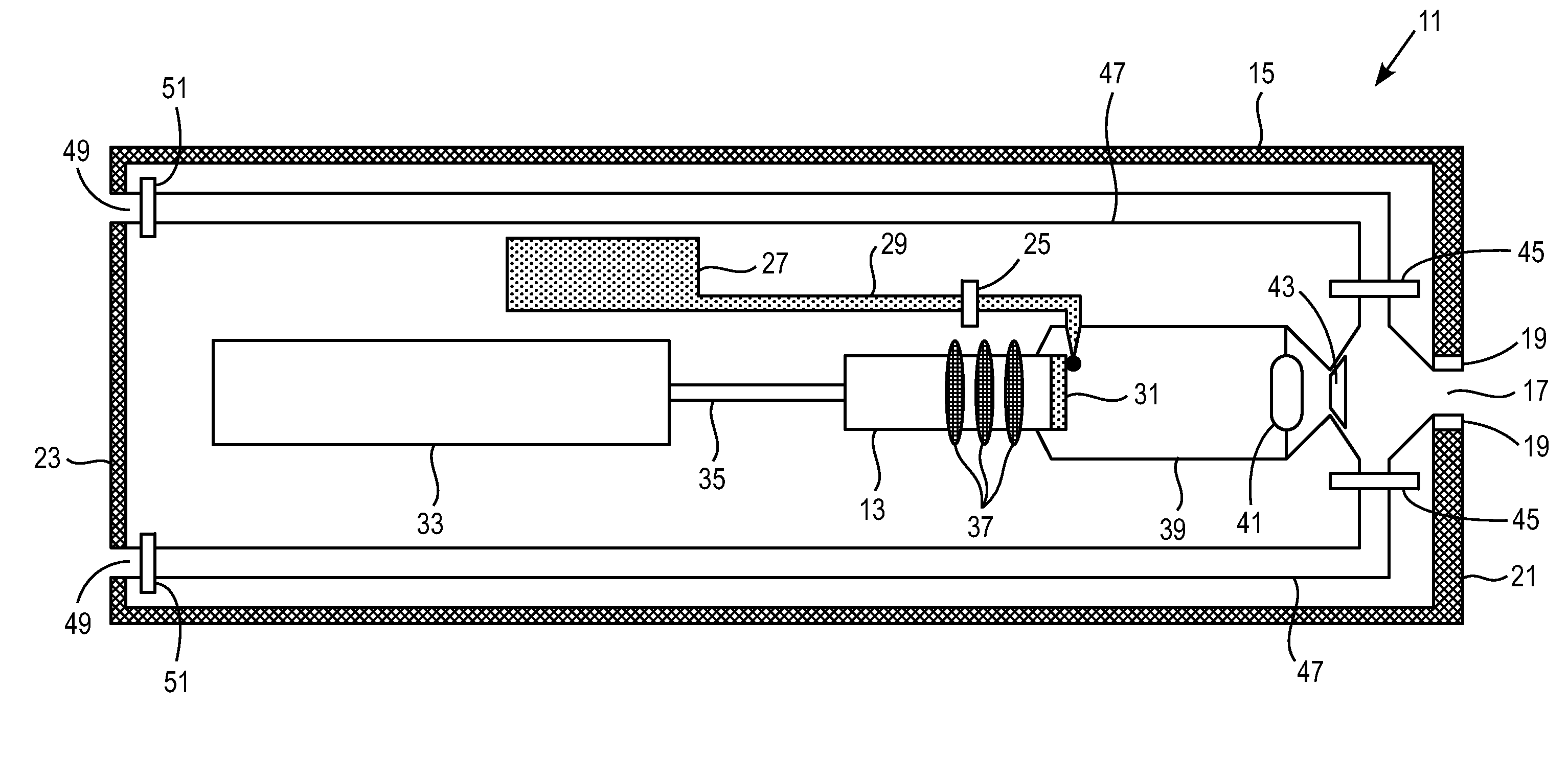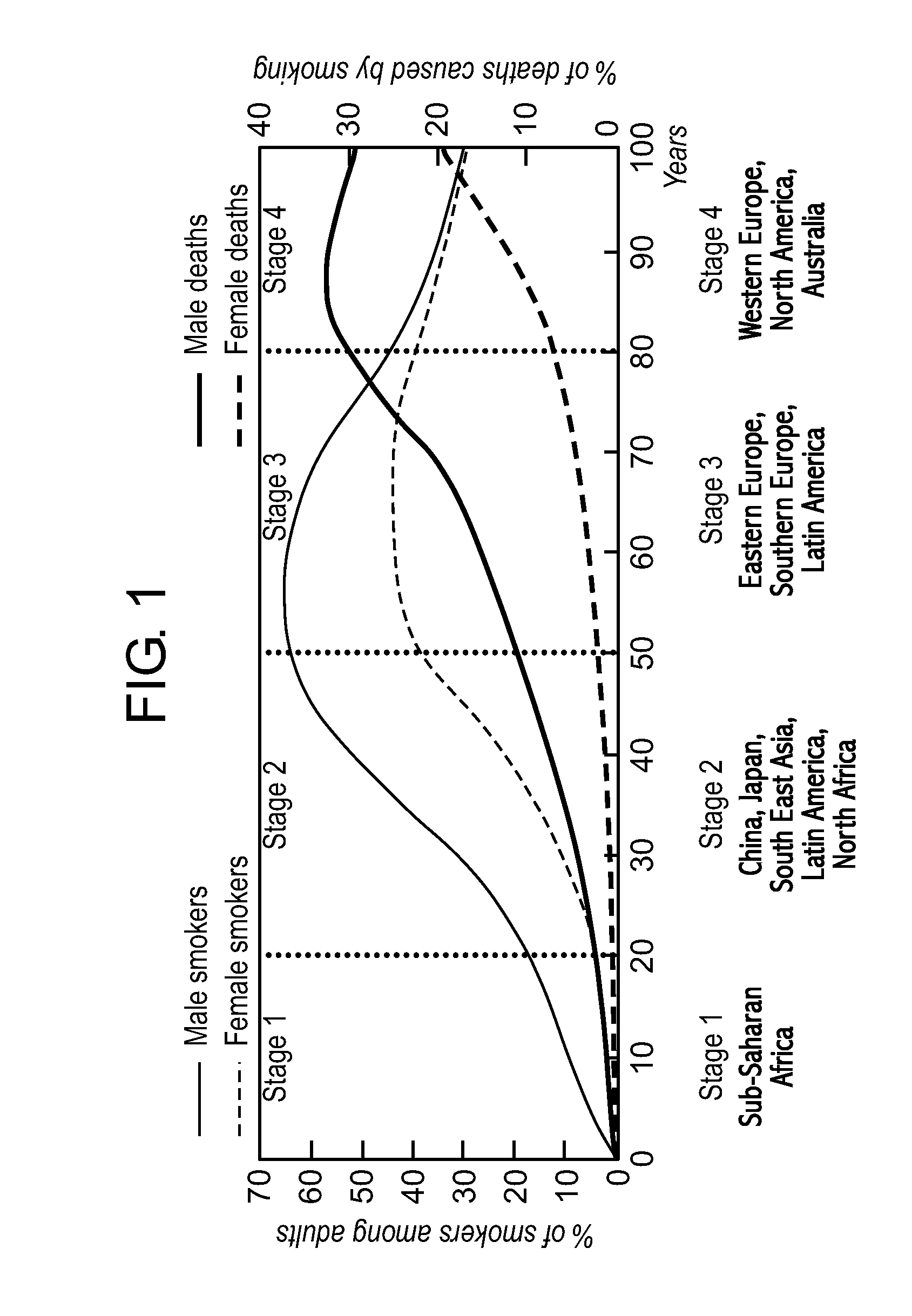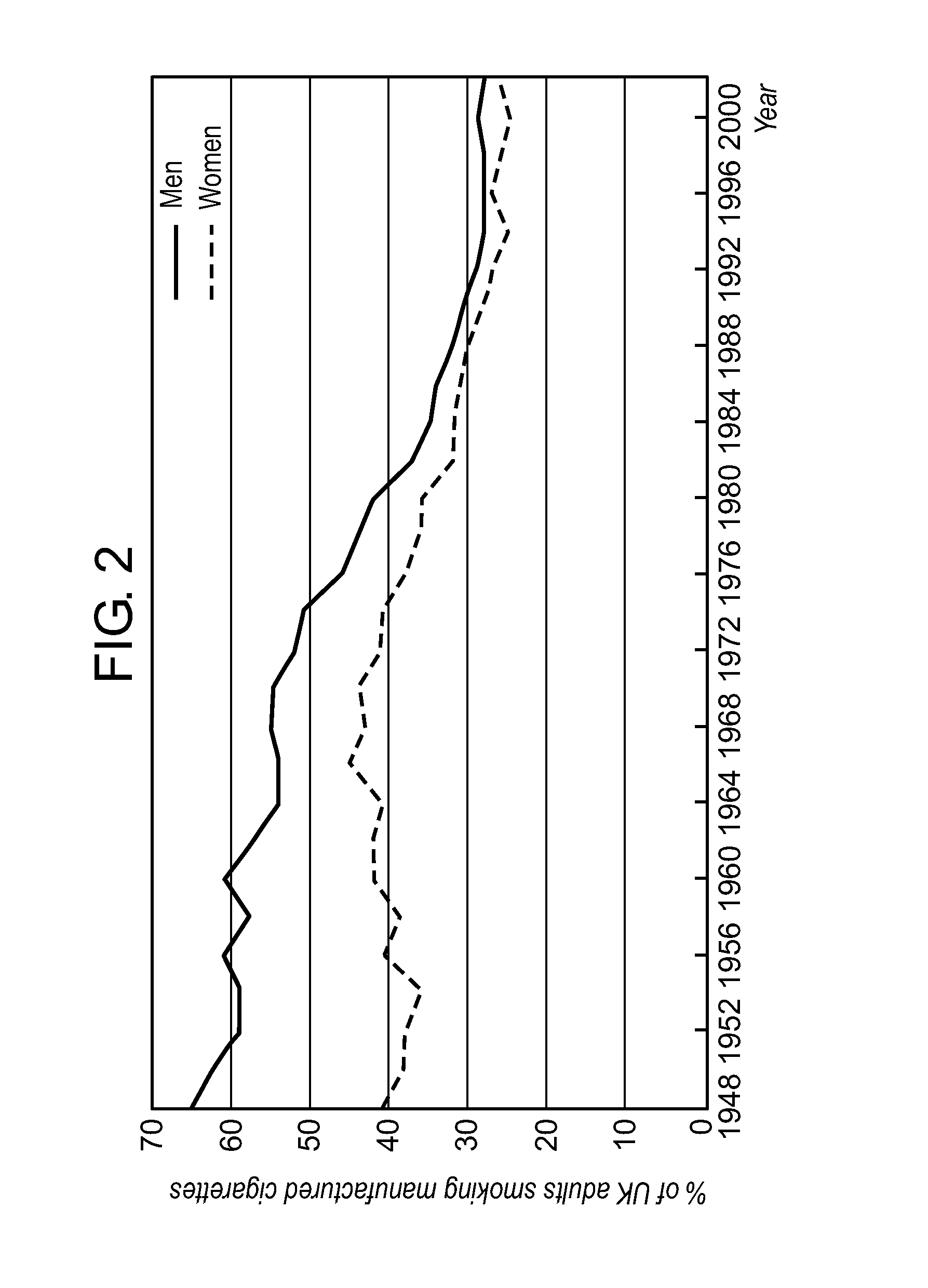A rapid increase in smoking
prevalence throughout the developing world is one of the key threats to present and future
world health.
Smoking in turn has lead to nearly 430,000 preventable deaths.
In fact, the decline in smoking prevalence may be stalling when considering increases in
population.
For most countries, the situation is worse.
Cigarette smoking is also likely to have toxic effects on the
retina which can cause severe and irreversible vision loss with
increased risk of 2-3 fold in current smokers compared with never-smokers.
Another major disorder is alcoholism, which poses a substantial health problem, costing approximately $165 billion per year just in the United States.
Nicotine is the addictive agent that prevents smokers from quitting, and is possibly responsible for more undesirable health consequences than any other single compound.
Historically, the development of a
safer cigarette has been hampered for three reasons.
First, and most importantly, removal of the toxins out of
smoke has been a technological challenge because the taste and smoking sensations has not been satisfactorily preserved.
Second, the cigarette companies were initially reluctant, due to legal problems, to admit that their “existing” products were dangerous.
Third, the profound distrust of the cigarette companies by anti-tobacco activists and health officials played an obstructionist role even when significant progress was being made in a given area.
Collectively, such issues dissuaded the
cigarette makers to aggressively conduct more research towards the development and marketing of
safer cigarette.
Based on a 2006 court ruling even the alleged light or ultra-light cigarettes used today are marketing ploys and are not better than the full-strength smokes because, for example, the smokers compensate for the lower
nicotine levels from the low-
tar cigarettes by puffing more often or through deeper
inhalation.
Unfortunately, lowering the levels of one or two hazardous compounds either raised the levels of other unsafe compounds, made the cigarette “taste” unacceptable to the smokers, or raised concerns by health groups and the cigarette companies.
Similarly, a cigarette developed in the “XA project” in the 1970's by Liggett Group, Inc. contained catalysts such as
palladium blended with tobacco to destroy PAH's formed behind the cigarette's burning tip, but this project was terminated due to pressure by other
cigarette makers because of a direct or implied admission that all other cigarettes were hazardous.
In addition, due to opposition by health group, the cigarettes introduced in 1977 by British firms Imperial, Gallaher, and Rothmans were removed from the market after a few months although tobacco was replaced with less toxic substitutes, including ingredients made from wood pulp.
Despite these efforts and heavy investment on research, almost every product developed was unacceptable in actual product tests or test markets.
In more recent studies, however,
public health officials showed that
ECLIPSE appears to be at least as toxic as some commercially available cigarette brands, and produces more
carbon monoxide and higher levels of other carcinogenic PAH's compared to the “light” brands such as NOW and CARLTON.
Importantly, when glycerin is burned, it is known to be carcinogenic.
Although the idea of the reduced-nicotine products appealed to smokers, Philip Morris never launched NEXT after poor
consumer reactions to the actual cigarette.
The process gave the smoker one drag, a display offered the number of remaining puffs before recharging the batteries, typically required after using the
cigarette pack The cigarette was test marketed only in Richmond, Va., and is no longer available partly because the lighter was bulky and cumbersome to use, the smoker had to learn a completely new smoking practice, and the cigarette still produced carcinogenic products.
The cigarette industry has been unable to offer a safe cigarette despite heavy investment, and as far as the
consumer is concerned the safest cigarette is no cigarette at all, which is not a realist goal.
Even though the public has come to recognize smoking hazards, in many cases they have been reluctant or unable to drop the
habit because of
addiction to nicotine or due to deriving pleasure from holding a cigarette and drawing air through the cigarette via the hand-to mouth action.
Such devices, however, may fail to provide an adequate psychological and physiological lift received either by the tobacco smoker or the user of cigarette substitutes offering nicotine, as described in U.S. Pat. No. 4,774,971.
This feature may be a
disadvantage for some users as liquid nicotine has an extremely bitter, almost caustic taste.
None of these devices, however, addressed a key “smoking ritual”: a constantly shifting grayish white
stream that looks like or resembles
cigarette smoke.
Several chemical-based approaches may be used to generate a white vapor, but their applications in a smokeless cigarette device are not practical due to several reasons such as size, cost, or possible heath restrictions.
Liquid helium is a good choice because of its temperature of −269° C., but it is very costly.
Liquid nitrogen (−196° C.) offers a large amount of white fog cloud, good cost-efficiency, and non-
toxicity as the gas is present in air in large quantities (78%), but is not suitable for use in small locations.
In addition, these liquids in contact with
skin cause cold-burning, and thus are very dangerous in a
liquid state.
Boiling water from 100 to 200 degrees Celsius can generate a cloud-like fog, but such a vapor cannot be introduced into the mouth.
At high temperatures, the fog juice can decompose to harmful byproducts that may affect health.
Likewise,
smoke generated from non-tobacco substances and other chemicals also produce
health problems.
A
check valve prevents
powder particles from being sucked into the first chamber, thus not allowing them to enter the mouth of the user.
 Login to View More
Login to View More 


